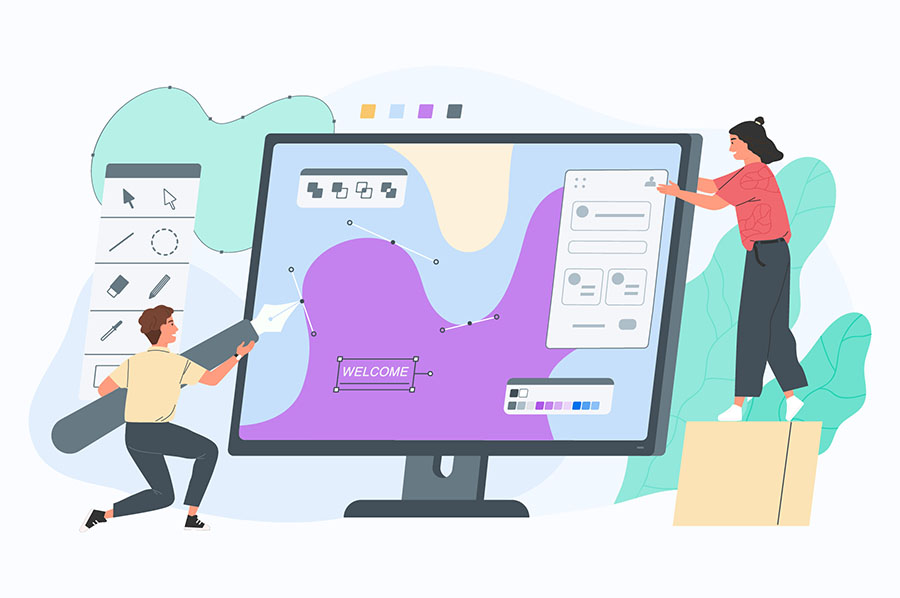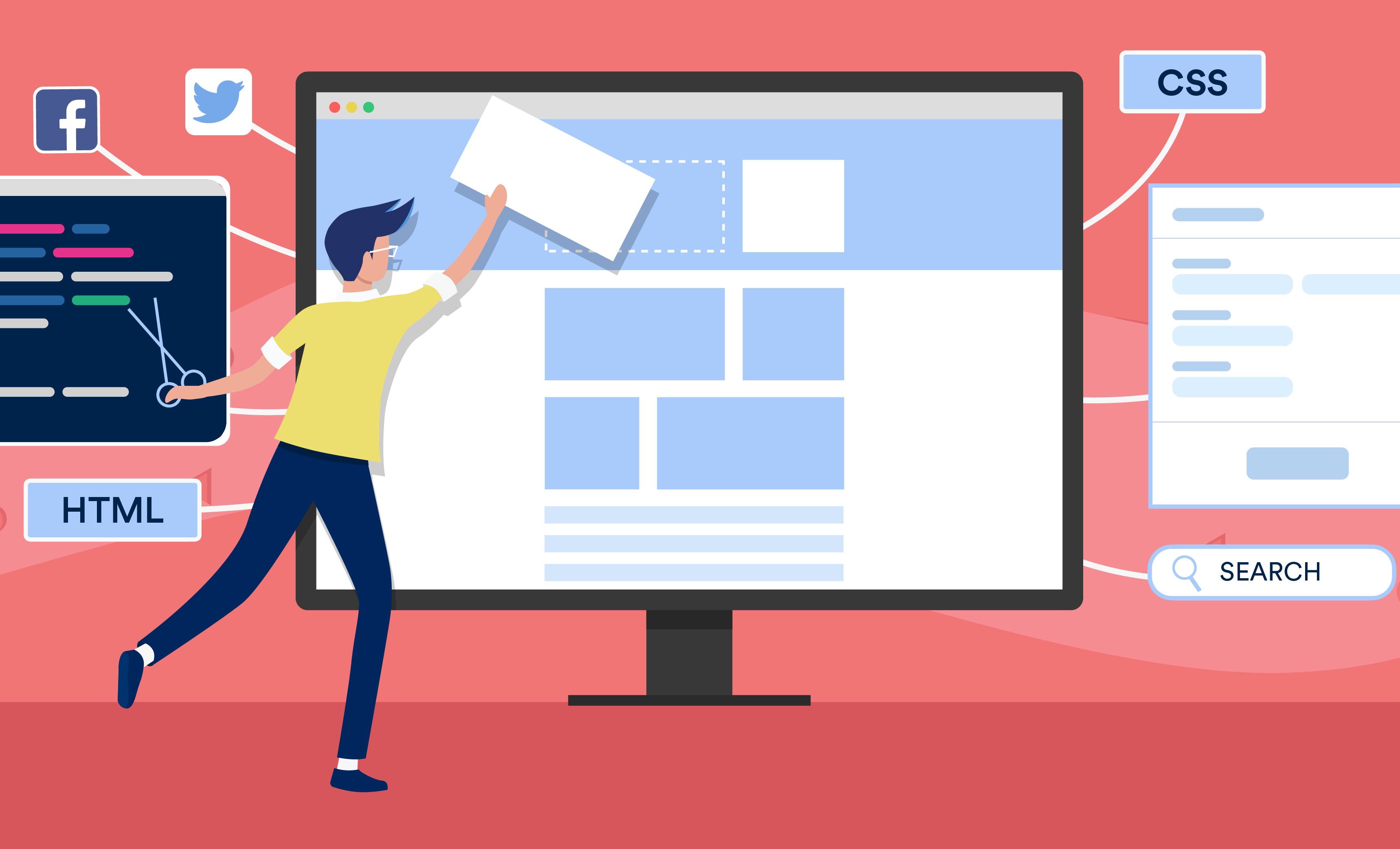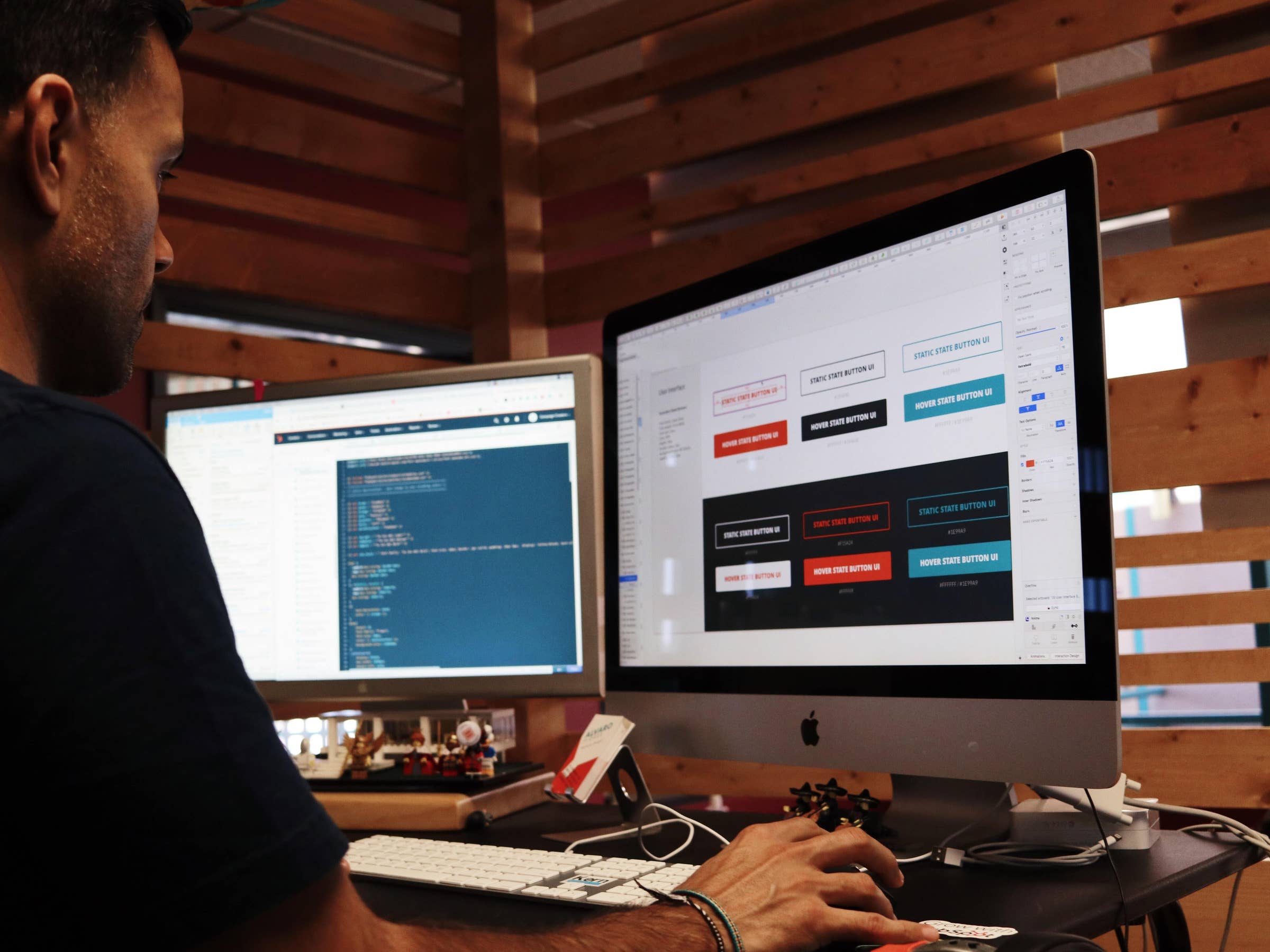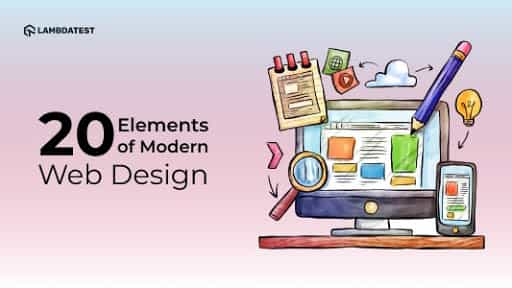All Categories
Featured
Table of Contents
- – Law Firm Website Design, Attorney Web Design, ...
- – The Top 10 Most Important Elements Of A Websi...
- – Web Design Projects - Behance Tips and Tricks:
- – Minneapolis Web Design - 100+ Five Star Revie...
- – Siteinspire - Web Design Inspiration Tips and...
- – 34 Of The Best Website Designs To Inspire You...
- – Custom Website Design And Marketing - Inmoti...
- – Why Web Design Is Dead - - Ux Magazine Tips ...
- – Responsive Web Design Certification - Freeco...
- – What Can I Do With A Web Design And Developm...
- – Web Design Services + Website Development Ag...
Law Firm Website Design, Attorney Web Design, Lawyer ... Tips and Tricks:
Quick summary Use and the utility, not the visual design, determine the success or failure of a site. Because the visitor of the page is the only individual who clicks the mouse and therefore chooses whatever, user-centric style has developed as a basic method for successful and profit-oriented website design - web design frederick md.
and the utility, not the visual design, figure out the success or failure of a site. Given that the visitor of the page is the only person who clicks the mouse and therefore chooses everything, user-centric style has actually become a basic approach for effective and profit-oriented web design. If users can't use a function, it may as well not exist.
g. where the search box need to be positioned) as it has already been performed in a number of short articles; instead we concentrate on the methods which, utilized correctly, can lead to more sophisticated style choices and simplify the procedure of viewing presented details. Please discover that you might be thinking about the usability-related short articles we've published prior to: Concepts Of Good Site Style And Efficient Web Style Guidelines, In order to use the principles correctly we initially require to comprehend how users engage with websites, how they think and what are the basic patterns of users' habits.
The Top 10 Most Important Elements Of A Website Design Tips and Tricks:
Visitors glance at each new page, scan some of the text, and click the first link that captures their interest or slightly resembles the important things they're trying to find. There are large parts of the page they don't even look at. Many users search for something fascinating (or helpful) and clickable; as soon as some appealing prospects are found, users click.
If a page provides users with top quality material, they are prepared to compromise the material with advertisements and the design of the website. This is the reason why not-that-well-designed sites with high-quality material acquire a great deal of traffic over years. Content is more essential than the style which supports it.

Users do not check out, they scan. Notice how "hot" areas abrupt in the middle of sentences. This is common for the scanning process. Very easy concept: If a site isn't able to meet users' expectations, then designer failed to get his job done properly and the business loses money. The greater is the cognitive load and the less intuitive is the navigation, the more ready are users to leave the site and look for options.
Web Design Projects - Behance Tips and Tricks:
Neither do they scan webpage in a direct fashion, going sequentially from one website section to another one. Rather users satisfice; they choose the first sensible choice. As soon as they find a link that looks like it might lead to the objective, there is a great chance that it will be immediately clicked.
It does not matter to us if we understand how things work, as long as we can utilize them. If your audience is going to act like you're creating billboard, then design fantastic signboards." Users wish to have the ability to control their internet browser and rely on the constant data discussion throughout the site.
If the navigation and website architecture aren't intuitive, the variety of enigma grows and makes it harder for users to comprehend how the system works and how to obtain from point A to point B. A clear structure, moderate visual ideas and easily recognizable links can help users to find their course to their aim.
Minneapolis Web Design - 100+ Five Star Reviews - Seo ... Tips and Tricks:

Since users tend to explore sites according to the "F"-pattern, these 3 statements would be the first elements users will see on the page once it is packed. The style itself is basic and intuitive, to comprehend what the page is about the user needs to search for the response.
When you've accomplished this, you can interact why the system works and how users can gain from it. People will not use your web site if they can't find their way around it. 2. Don't Squander Users' Perseverance, In every task when you are going to offer your visitors some service or tool, try to keep your user requirements very little.
Newbie visitors are willing to, not filling long web kinds for an account they may never ever utilize in the future. Let users explore the website and find your services without requiring them into sharing personal information. It's not affordable to force users to get in an e-mail address to evaluate the feature.
Siteinspire - Web Design Inspiration Tips and Tricks:
Stikkit is an ideal example for an user-friendly service which needs almost nothing from the visitor which is inconspicuous and soothing. Which's what you want your users to feel on your website. Apparently, Termite requires more. Nevertheless the registration can be carried out in less than 30 seconds as the type has horizontal orientation, the user doesn't even need to scroll the page.
A user registration alone is adequate of an obstacle to user navigation to cut down on inbound traffic. Handle To Focus Users' Attention, As websites offer both static and dynamic content, some elements of the user interface attract attention more than others do.
Focusing users' attention to specific areas of the website with a moderate usage of visual components can help your visitors to get from point A to point B without thinking of how it actually is supposed to be done. The less enigma visitors have, the they have and the more trust they can establish towards the business the site represents.
34 Of The Best Website Designs To Inspire You In 2022 Tips and Tricks:
Make Every Effort For Feature Exposure, Modern web designs are generally criticized due to their method of guiding users with aesthetically appealing 1-2-3-done-steps, big buttons with visual results etc. From the design perspective these components in fact aren't a bad thing.
The site has 9 main navigation options which are visible at the very first glimpse. What matters is that the material is well-understood and visitors feel comfy with the method they interact with the system.
Rather a rate: just what visitors are looking for. An ideal solution for efficient writing is touse brief and succinct phrases (come to the point as rapidly as possible), use scannable design (categorize the material, use numerous heading levels, use visual elements and bulleted lists which break the flow of uniform text blocks), use plain and objective language (a promotion does not require to sound like ad; give your users some reasonable and unbiased factor why they should utilize your service or remain on your website)6.
Custom Website Design And Marketing - Inmotion Hosting Tips and Tricks:
Users are rarely on a site to delight in the style; furthermore, most of the times they are looking for the information regardless of the design - web design frederick md. Pursue simpleness rather of complexity. From the visitors' viewpoint, the finest website design is a pure text, with no ads or additional material obstructs matching exactly the query visitors used or the content they've been searching for.
Finch plainly presents the details about the site and offers visitors a choice of options without overcrowding them with unnecessary material. Not just does it assist to for the visitors, but it makes it possible to perceive the info provided on the screen.
Complex structures are more difficult to read, scan, analyze and deal with. If you have the choice in between separating 2 design segments by a noticeable line or by some whitespace, it's normally better to utilize the whitespace solution. (Simon's Law): the much better you handle to provide users with a sense of visual hierarchy, the easier your content will be to view.
Why Web Design Is Dead - - Ux Magazine Tips and Tricks:
The exact same conventions and guidelines must be applied to all elements.: do the most with the least quantity of hints and visual elements. Four significant indicate be thought about: simplicity, clarity, diversity, and emphasis. Simplicity includes only the components that are crucial for interaction. Clearness: all elements ought to be designed so their meaning is not ambiguous.
Conventions Are Our Good friends, Standard design of site aspects doesn't result in a boring web website. It would be an usability problem if all websites had various visual discussion of RSS-feeds.
comprehend what they're anticipating from a site navigation, text structure, search placement etc. A case in point from functionality sessions is to translate the page in Japanese (presuming your web users do not understand Japanese, e. g. with Babelfish) and supply your usability testers with a task to discover something in the page of different language.
Responsive Web Design Certification - Freecodecamp.org Tips and Tricks:
Steve Krug recommends that it's better to, however benefit from conventions when you don't. 10. Test Early, Test Typically, This so-called TETO-principle needs to be applied to every web design project as usability tests typically offer into considerable problems and concerns related to a given design. Test not too late, not insufficient and not for the wrong factors.
Some crucial points to keep in mind: according to Steve Krug, and testing one user early in the job is better than testing 50 near completion. Accoring to Boehm's very first law, mistakes are most frequent during requirements and style activities and are the more pricey the later on they are gotten rid of.
That means that you develop something, test it, repair it and then evaluate it again. There may be problems which have not been discovered during the first round as users were practically blocked by other problems.
What Can I Do With A Web Design And Development Degree? Tips and Tricks:

This holds for designers. After you have actually worked on a site for few weeks, you can't observe it from a fresh perspective anymore. You understand how it is built and for that reason you know exactly how it works you have the knowledge independent testers and visitors of your site wouldn't have.
It can be connected to other areas such as graphic design, user experience, and multimedia arts, however is more aptly seen from a technological perspective. It has actually ended up being a large part of individuals's everyday lives. It is tough to think of the Internet without animated graphics, different styles of typography, background, videos and music.

Throughout 1991 to 1993 the World Wide Web was born. Text-only pages might be seen using an easy line-mode internet browser. In 1993 Marc Andreessen and Eric Bina, created the Mosaic web browser. At the time there were several browsers, nevertheless most of them were Unix-based and naturally text heavy. There had actually been no integrated approach to graphic design components such as images or sounds.
Web Design Services + Website Development Agency Tips and Tricks:
The W3C was created in October 1994 to "lead the World Wide Web to its full capacity by developing typical procedures that promote its advancement and guarantee its interoperability." This prevented any one company from monopolizing a propriety web browser and programming language, which might have changed the impact of the Web as a whole.
As this has actually taken place the technology of the web has also moved on. There have also been significant changes in the method people utilize and access the web, and this has actually altered how sites are developed.
Learn more about Lovell Media Group LLC or TrainACETable of Contents
- – Law Firm Website Design, Attorney Web Design, ...
- – The Top 10 Most Important Elements Of A Websi...
- – Web Design Projects - Behance Tips and Tricks:
- – Minneapolis Web Design - 100+ Five Star Revie...
- – Siteinspire - Web Design Inspiration Tips and...
- – 34 Of The Best Website Designs To Inspire You...
- – Custom Website Design And Marketing - Inmoti...
- – Why Web Design Is Dead - - Ux Magazine Tips ...
- – Responsive Web Design Certification - Freeco...
- – What Can I Do With A Web Design And Developm...
- – Web Design Services + Website Development Ag...
Latest Posts
Figma: The Collaborative Interface Design Tool. Tips and Tricks:
Web Design - The First 100 Years - Idle Words Tips and Tricks:
Web Design Certificate - Web Development Certificate Program Tips and Tricks:
More
Latest Posts
Figma: The Collaborative Interface Design Tool. Tips and Tricks:
Web Design - The First 100 Years - Idle Words Tips and Tricks:
Web Design Certificate - Web Development Certificate Program Tips and Tricks: